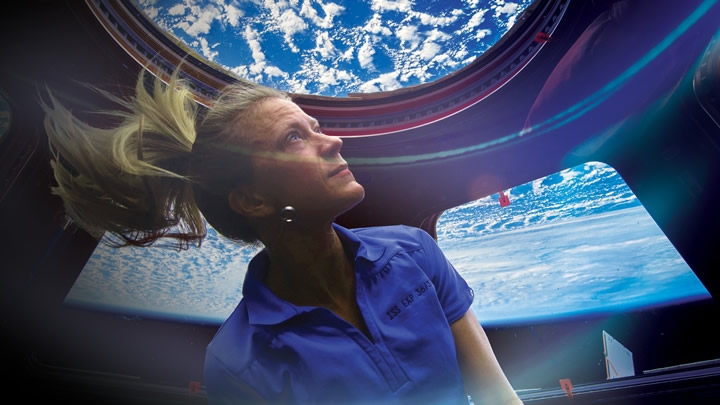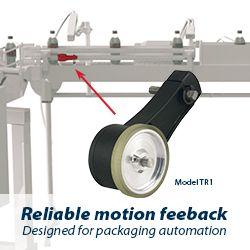In a world that's always evolving, innovation is how we keep up, grow, and thrive. So, when we talk about nurturing innovation, we're really talking about fuelling the very essence of human progress and hope.
 Fostering Innovation: The Keys to Success
Fostering Innovation: The Keys to Success

Neil Curtis, DVP Sales, Marketing, and Service, | Zygo Corporation
Innovation isn't just a buzzword, it's the key motivator for our future. It's about real people, companies, and organizations coming up with extraordinary ideas that change the way we live, work, and play. Innovation is that spark of creativity and curiosity in everyone, pushing us to ask 'what if' and 'why not'. It's about finding solutions that don't just work, but change the game entirely. It's how we break free from the old ways that hold us back and embrace a future full of possibilities. In a world that's always evolving, innovation is how we keep up, grow, and thrive. So, when we talk about nurturing innovation, we're really talking about fuelling the very essence of human progress and hope.
In this article, I would like to draw together some thoughts about innovation from the perspective of leading optical metrology innovator and optical component manufacturer Zygo, and also from the perspective of Karen Nyberg, an engineer, retired astronaut, and Zygo brand ambassador who, in 2008, became the 50th woman to travel to space as a Mission Specialist on Space Shuttle Discovery, STS-124.
Over its 53 plus year history, Zygo has been granted over 880 patents. That does not happen by accident, it comes by harnessing talent and nurturing innovation. The massively ambitious International Space Station (ISS) project is there purely as a result innovative thinking, and joining the dots in a way that will achieve objectives safely and affordably. And let’s face it, we live in a world where innovation must be affordable. We do not have limitless budgets for research and development, and so innovations must be made pragmatically within workable financial parameters. This makes innovation harder, and it places more and more emphasis on knitting the vital ingredients that foster innovation together. Fundamentally talented people working in a culture that is supportive and encouraging, and dynamic enough to take ideas to reality.
THE BEATING HEART OF INNOVATION
Nyberg says, “At the heart of creating ground-breaking products and remarkable outcomes such as the ISS, there's a mix of special ingredients that make all the difference. Picture a company where creativity isn't just a buzzword, but a way of life. A company where people are encouraged to think differently, to take chances, and to view setbacks not as failures, but as valuable lessons. This is a company where being a little bit unconventional is celebrated, where stepping out of your comfort zone is the norm. It's about embracing the new and the unknown, and daring to ask, ‘What if?’”
“Now, imagine a team where everyone from the tech expert to the artistic visionary works together, each bringing their own unique flavor to the table. It's like a brainstorming session where every idea, no matter how outlandish, is given a chance to shine. This diversity of thought and experience is the breeding ground for those Eureka moments that change the world.”
There is no doubt that Nyberg is right, but these ideas don't just float in the air, but are instead grounded in a company or organization that’s got their back. This means having the resources — like cutting-edge tech and funding for bold experiments — as well as an education system that sparks curiosity from the get-go. It's about creating a safety net of rules and rights that protect these bright ideas, while also giving them room to breathe and grow.
And none of this would be possible without leaders who don't just talk the talk but walk the walk. They're the ones who set the stage, who believe in the power of what could be, and make sure that great ideas don't just stay ideas — they become the innovations that light up the future.
CHALLENGES & OPPORTUNITIES
Navigating the high-tech innovation landscape can be as daunting as it is exhilarating. One of the biggest hurdles is the financial goliath that innovators must wrestle with. Securing funding to transform a spark of an idea into a reality is no small feat. It's a competitive arena where only the most promising of ventures, those with a blend of ingenuity and practicality, manage to catch the eye.
Then there's the slog of research and development — often a gruelling test of patience and resilience. High-tech industries face a constant battle against time and technical setbacks as they race to turn concepts into viable products before the pace of technology leaves them behind. And let's not forget the interdisciplinary collaboration that must be conducted, the blending of different expertise and perspectives, which is crucial yet complex, to produce innovations that are both ground-breaking and reliable.
However, within these challenges lies huge opportunity. The very scarcity of funding means that only the most robust and innovative ideas rise to the top, ensuring that investments flow to innovations with the highest potential impact.
The trials of R&D are a driver for excellence, pushing teams to their creative limits and resulting in products that redefine the boundaries of what's possible. As for the need for varied expertise, it's a golden chance to break down silos and bring together diverse minds, creating a fusion of knowledge that can spark solutions to the most intricate of problems. This convergence can lead to breakthroughs that no single discipline could achieve on its own. In embracing these challenges, high-tech industries can propel society forward, turning obstacles into stepping stones for progress, and in the process, shaping a future that is as exciting as it is unpredictable.
PERSPECTIVES FROM SPACE
From Nyberg’s perspective, innovation in space flight is multi-faceted. “When you look at a project like the International Space Station (ISS), the development time-lines are so long, that we are still using things that were ground-breaking innovations in the 1990s. I guess today they look kind of old hat. Of course, they are now surrounded by new innovations, and part of the success of the ISS project is the ability to innovate new products and also innovate new ways to use old products. A lot of the ISS work day-to-day involves thinking on the fly, of course using innovation as the key to being able to explore space which obviously means pushing boundaries, but also finding solutions to unexpected problems by having an innovative mind set.”
As mentioned before, for companies like Zygo, and for projects like the ISS, attracting people with innovative and creative mind sets is one piece of the puzzle, another is allowing them to work in a culture that promotes this creativity, and importantly a third is promoting collaboration among and between teams. With these ingredients in place, the sky (if you will pardon the pun) is the limit.
SUSTAINABILITY
Innovation today isn't just about breaking new ground. Put succinctly, it's about treading lightly on the ground we've already got. Many of the brightest companies are those that see sustainability not as a hurdle, but as a springboard for creativity, or — like Zygo — which through devising innovative products also promotes innovation in sectors which drive sustainability.
In the rush of excitement that comes with new technology, there's a quiet revolution happening — a shift towards responsible innovation. Companies leading this charge recognize that the brightest future is one that's sustainable for the planet. They're the ones asking the tough questions. How can we make this more energy-efficient? What's the lifecycle of our product?
By weaving sustainability and ethics into their business strategies, these organizations are painting a vision of the future that's as compassionate as it is innovative — a place where progress and principles go hand in hand.
Nyberg says, “Since retiring from NASA, I am currently pursuing interests in the areas of conservation and sustainability, fully appreciating the responsibility for innovation and technology to strive to meet those needs. I am always surprised by the number of people that seem dismissive of the drive for sustainability, thinking it is too much trouble, too costly, or someone else’s problem. Innovation is the key to unlocking environmental solutions, but the solutions need to be pragmatic and work while still sustaining economic growth and the drivers that keep society moving forward. There is as always a balance to be struck.”
THE FUTURE
And what of the future? Well, from Zygo’s perspective, we stand on the cusp of a technological renaissance where the synergy of artificial intelligence (AI) and advanced optics could redefine precision. AI, with its capacity for rapid data analysis and pattern recognition, could integrate seamlessly with optical metrology, ushering in an era of smarter, autonomous systems capable of real-time decision-making. This union promises not only enhanced accuracy in measurements but also a revolution in predictive maintenance, where AI anticipates the need for adjustments before imperfections can arise. Moreover, as machine learning algorithms grow more sophisticated, they may further refine the precision of optical instruments, pushing the boundaries of what's measurable and manufacturable.
Miniaturization is another frontier that's transforming the landscape. The drive towards making devices smaller, more efficient, and more powerful is relentless, fuelling innovations in micro-optics and nano-photonics. These tiny yet mighty technologies are paving the way for a new generation of compact yet powerful sensors and instruments that can fit into the palm of your hand or even inside the human body. Alongside this, the exploration of new materials with extraordinary properties — like metamaterials that bend light in unconventional ways — promises to break the conventional limitations of optical manufacturing. These materials are not just expanding the toolkit for engineers and designers, they are rewriting the rulebook, opening up possibilities for manufacturing that today's innovators are just beginning to imagine.
The content & opinions in this article are the author’s and do not necessarily represent the views of RoboticsTomorrow
Comments (0)
This post does not have any comments. Be the first to leave a comment below.
Featured Product

